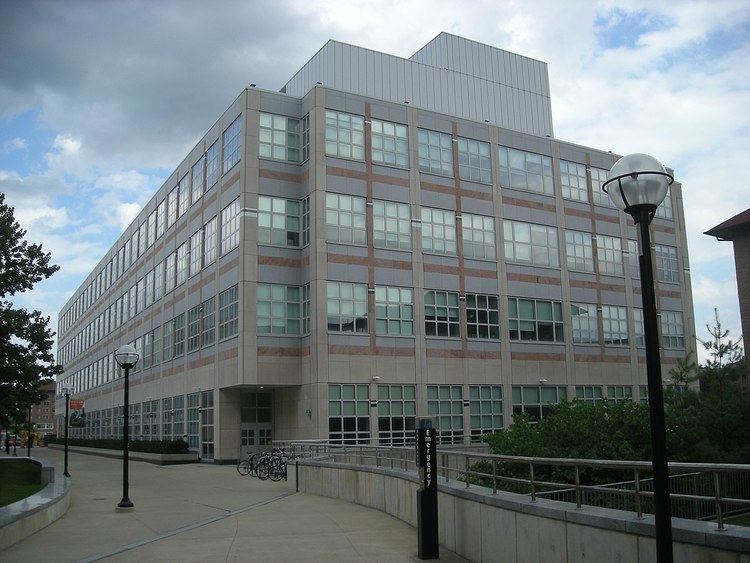Established 1999 Director Roger D. Cone, Ph.D. Date founded 1999 | Research type Basic (non-clinical) Location Ann Arbor, MI Phone +1 734-763-1200 | |
 | ||
Field of research Biochemistry, Cell Biology, Chemical biology, Computational Biology, Genetics, Neuroscience, Structural Biology, Stem Cell Biology, Medicine Address 210 Washtenaw Ave, Ann Arbor, MI 48109, USA Hours Open today · 8AM–5PMFriday8AM–5PMSaturdayClosedSundayClosedMonday8AM–5PMTuesday8AM–5PMWednesday8AM–5PMThursday8AM–5PM Fields of research Biochemistry, Cell biology, Chemical biology Profiles | ||
The university of michigan life sciences institute
The Life Sciences Institute (LSI) is a collaborative, independent research institution located on the campus of the University of Michigan in Ann Arbor. It encompasses 25 faculty-led teams from 13 schools and departments throughout U-M. The LSI bring together leading scientists from a variety of life science disciplines, working in a range of animal models and using a number of cutting-edge research tools, to accelerate breakthroughs and discoveries that will improve human health and lead to new treatments for diabetes, neurodegenerative disease, cancer and infectious disease.
Contents
- The university of michigan life sciences institute
- University of michigan life sciences institute
- History
- Leadership
- The Center for Stem Cell Biology
- The Center for Chemical Genomics
- The Center for Structural Biology
- The Center for the Discovery of New Medicines
- Innovation Partnership
- U MIsrael Partnership for Research
- Facility
- LSI Symposium
- References
Of the university’s $823 million in research expenditures, more than half is allocated for research in the life sciences, and the LSI is a cornerstone of this effort.
University of michigan life sciences institute
History
The Life Sciences Institute’s construction was approved by the Board of Regents in May 1999. Initial funding of $100 million was provided for the creation of wet lab space, in addition to the $130 million for the endowment and startup costs.
Leadership
In January 2002, Mary Sue Coleman, U-M's president, appointed cell biologist and expert on insulin signaling Alan R. Saltiel as director. The institute’s first director was Jack E. Dixon. The managing director is Anna Schork.
The Center for Stem Cell Biology
The Center for Stem Cell Biology is a collaborative division of the Life Sciences Institute where stem cells are studied in a cross-disciplinary manner. At the Center for Stem Cell Biology, questions addressed include fundamental inquiries into tissue development and cell communication. Morrison himself investigates the mechanisms underlying the functioning of stem cells in the nervous and hematopoietic systems. Morrison's lab has disproven the immortal strand hypothesis for blood-forming stem cells.
The Center for Chemical Genomics
A High Throughput Screening (HTS) facility is a central component of the Center for Chemical Genomics (CCG). This core facility is designed to assist academic researchers in carrying out high-throughput screens of chemical libraries and to identify new tools for biological research.
The Center for Structural Biology
The Center for Structural Biology (CSB) is a "collaboratory" for X-ray crystallography, crystallization and protein engineering, and is a comprehensive structural biology resource for researchers at the University of Michigan and surrounding area. The center includes:
The Center for the Discovery of New Medicines
The Center for the Discovery of New Medicines (CDNM), housed in the LSI, coordinates and supports the development of therapeutics from discovery to the market. The strengths of U-M’s Medical, Pharmacy, Engineering and Public Health schools combine with departments in chemistry, biology, dentistry and nursing and converge with U-M’s offices of Tech Transfer and Business Development. The university’s scientific cores in chemical genomics, medicinal chemistry, animal models and pharmacokinetics provide an array of equipment and expertise to help researchers turn promising compounds into new medicines.
Innovation Partnership
The Innovation Partnership’s goal is to bridge the gap, known as the 'Valley of Death,' between laboratory research discoveries from biomedical researchers and venture capitalists who can potentially make the discoveries viable in the marketplace. The Partnership supports work in neurodegenerative diseases, diabetes, cancer and infectious disease.
U-M/Israel Partnership for Research
In collaboration with the Cardiovascular Center at U-M, the LSI funds promising collaborative research between scientists at U-M and at institutions in Israel.
Facility
The LSI is a 235,000 square feet building with six floors between U-M's central campus and the university's health system in Ann Arbor. Completed in 2003, the building includes housing for wet lab and laboratory support spaces, administration offices, PI offices, interaction spaces, core laboratory areas, a combined gallery/lobby space and a small library.
The exterior design of the building is intended to harmonize with other campus loft-style structures, while also meeting the needs of a modern research institute.
LSI Symposium
The LSI Annual Symposium invites leading scientists from different disciplines to converge around a single topic. Past symposia have been designed to explore genetic insights into biology and disease, cancer, stem cell biology, evolutionary biology, autophagy and diseases of the nervous system.
